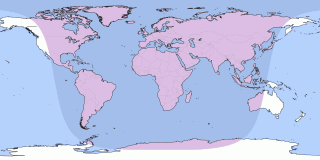Feb 21, 2027 at 6:47 am
Max View in 30°35'35.1"N, 114°18'19.2"E
| Global Event: | Penumbral Lunar Eclipse |
|---|---|
| Local Type: | Penumbral Lunar Eclipse, in 30°35'35.1"N, 114°18'19.2"E |
| Begins: | Sun, Feb 21, 2027 at 5:12 am |
| Maximum: | Sun, Feb 21, 2027 at 6:47 am -0.108 Magnitude |
| Ends: | Sun, Feb 21, 2027 at 6:56 am |
| Duration: | 1 hour, 44 minutes | All times shown on this page are local time. |
Eclipses and Transits Visible in 30°35'35.1"N, 114°18'19.2"E
| Eclipse Visibility From 30°35'35.1"N, 114°18'19.2"E | Visibility Worldwide | ||
|---|---|---|---|
| Sep 7–8, 2025 Total Lunar Eclipse | Total Lunar Eclipse |  | |
| Mar 3, 2026 Total Lunar Eclipse | Total Lunar Eclipse |  | |
| Feb 21, 2027 Penumbral Lunar Eclipse | Penumbral Lunar Eclipse |  | |
| Jul 6–7, 2028 Partial Lunar Eclipse | Partial Lunar Eclipse |  | |
| Dec 31, 2028–Jan 1, 2029 Total Lunar Eclipse | Total Lunar Eclipse |  | Note: Click on the date link for details in 30°35'35.1"N, 114°18'19.2"E, or the path map image for global details. Currently shown eclipse is highlighted. |
Next annular eclipse visible in 30°35'35.1"N, 114°18'19.2"E
